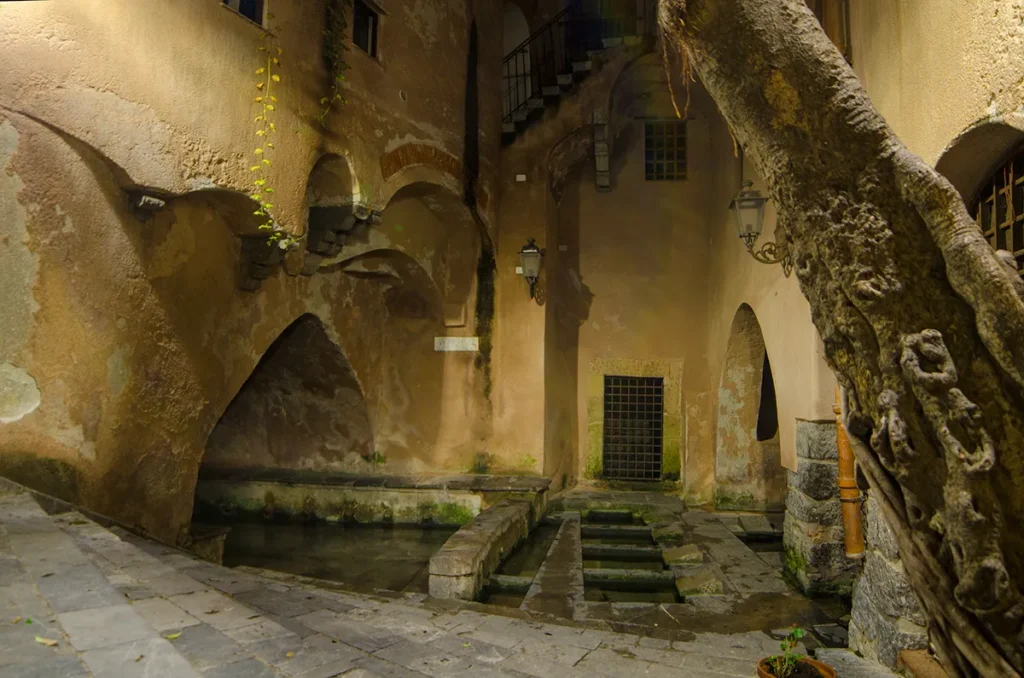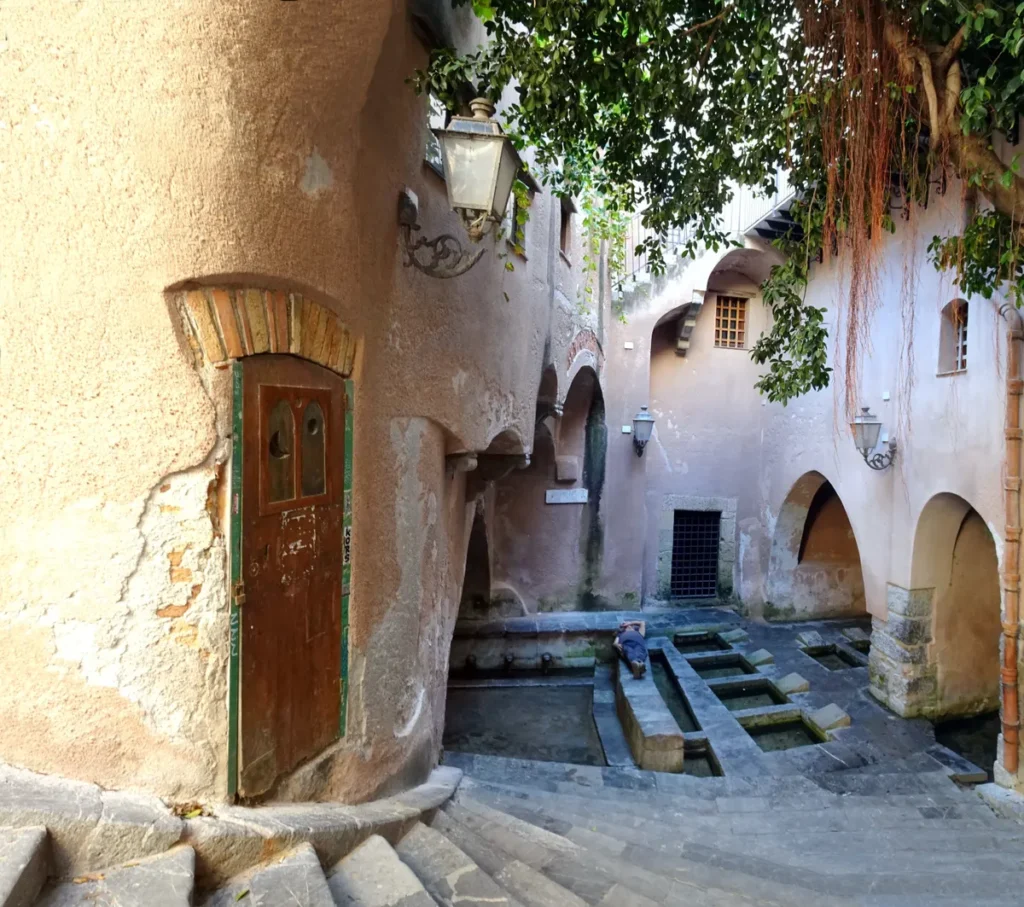What’s the first thing that comes to mind when you think of Sicily?
Sun-soaked beaches? Pasta alla Norma? Norman cathedrals towering over piazzas?
What if we told you there’s an ancient open-air laundry carved into the rocks, where pure spring water has been flowing for centuries — and still is?
Welcome to Lavatoio Medievale, one of Cefalù’s most fascinating (and oddly calming) spots.

It’s not a museum. It’s not a ruin. It’s a glimpse into the everyday life of medieval Sicily that’s hiding in plain sight.
What is Lavatoio Medievale?
At first glance, it looks like a quiet stone staircase leading underground. But follow the sound of trickling water and you’ll discover a series of smooth stone basins, fed by the Fiume Cefalino: a spring whose source is still unknown.

For generations, this was Cefalù’s communal wash house, where women came to do laundry and catch up on town news. Today, you can walk among the worn stones, listen to the water echo through the vaulted space, and imagine what life here once sounded like.

Fun fact: Legend says that Cefalino’s waters were a divine gift, so pure they could wash away sorrow itself.
How to Experience It
Looking to visit Cefalù? Here’s what you should consider:
🕒 Best time to visit: Early morning (for soft light) or late afternoon (when it’s quieter).
⏳ Time to spend: About 20–30 minutes — enough to wander, take photos, and soak in the vibe.
🎟️ Cost: Free. Open to the public.
Pro tip: It’s right in Cefalù’s old town — perfect for a quick stop as you explore the streets.
What’s Nearby?
Pair your visit with:
✅ A stroll through Cefalù’s historic center (don’t miss the narrow alleys and artisanal shops)
✅ The iconic Norman Cathedral of Cefalù, a stunning UNESCO World Heritage Site
✅ A walk along Lungomare beach for a sunset view
Why It’s Worth Visiting
In a region packed with grand sights, Lavatoio Medievale offers something rare — a moment of quiet connection with Sicily’s past. No long lines, no audio guides. Just the steady flow of water, the coolness of ancient stone, and your own imagination.
Sometimes, the most ordinary places tell the richest stories.

